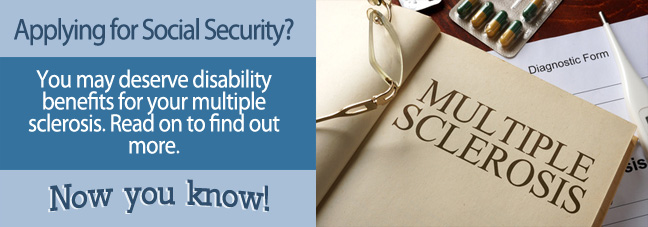More than 400,000 people in the United States currently live with multiple sclerosis. While some people experience minimal symptoms and rare flare-ups, those with severe MS experience consistent, worsening symptoms that make working life (and everyday life) difficult.
If your severe MS prevents you from living normally, then Social Security benefits may be an answer. Before starting the application, refer to the following top 3 tips to be sure you give yourself the best chance at receiving benefits.
Tip #1: Receive (or redo) muscle function tests, mental function tests, and scans.
The best place to start when preparing for your application is to make sure all of your medical tests are up-to-date. Because most severe MS symptoms worsen over the time, you will be more likely to receive benefits with recent tests that reflect your current condition. MS is measured in a variety of ways, so there are multiple tests available for you to take.
MRIs and CT scans are common tests used to show the progression of MS in the brain and other affected areas of the body. Muscle function tests and mental function tests are also commonly used to diagnose difficulties resulting from the progress of neuron degeneration in the brain.
In general, the more testing you provide on your application, the more likely you are to medically qualify for benefits.

Tip #2: Consult your physician to see if your symptoms may allow you to qualify under a separate disorder.
Severe MS is capable of drastically affecting the function of other organs and body systems. Depending on the progress of your disorder, you may actually be more likely to qualify for these symptoms as opposed to the SSA’s ruling on MS.
For example, some people have multiple sclerosis, which specifically targets the area of the brain that processes visual cues. This can result in serious eye problems or vision loss. In this case, it may be in an applicant’s best interest to see if they qualify under the SSA’s qualifications for vision loss instead.
Tip #3: Document often-forgotten details such as daily activity lists and testimonies.
Most applicants are sure to include the basics of their medical history (test results, medications lists, hospitalization history, etc.) when turning in their applications. However, supporting medical evidence can be found in a variety of places that are often overlooked when applying.
For example, documenting the activities you complete (or are unable to complete) in an average day can give the SSA insight into why you require assistance. Testimonies from physicians, therapists, old bosses, coworkers, friends, or family members can also support your claims and potentially increase your chances of getting benefits.
Contacting an Attorney
From organizing paperwork to updating the SSA to potentially filing an appeal later on, the disability benefits process can feel very overwhelming. With the help of a disability attorney, your application process can proceed painlessly, with faster completion and no mistakes.
In fact, federal regulation prevents disability attorneys from taking payment unless you win your case, so you will never have to pay money outside of your awarded benefits.
Before starting your application, consider a free consultation with a disability attorney and find out what they can do for your case to increase your chances of getting benefits.